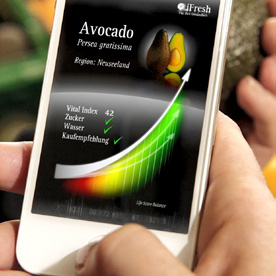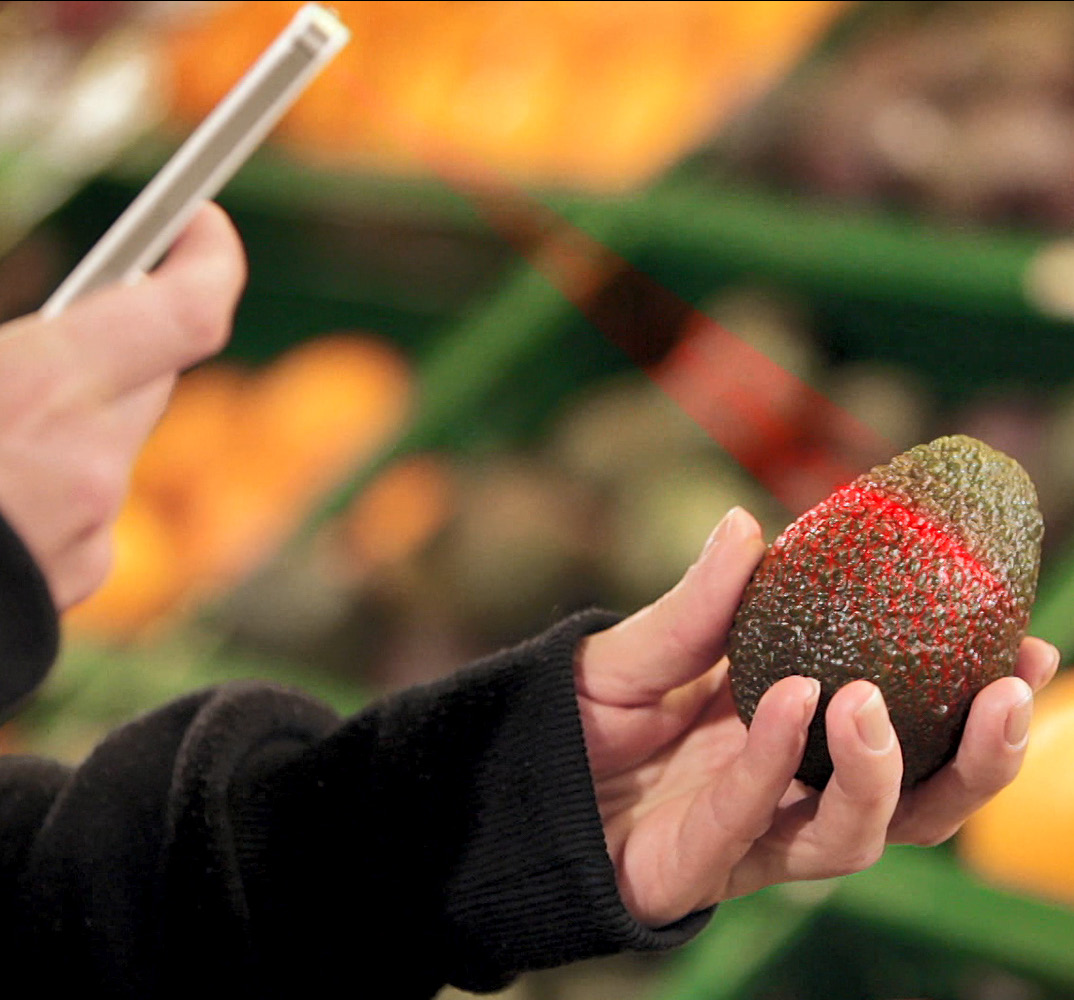A food lab on your phone
High-quality food is in demand – but the actual quality cannot always be detected by the naked eye. Researchers at Fraunhofer IPMS have developed a solution to turn smartphones into food laboratories: spectral analysis is used to analyze the real nutritional value of food while shopping.


It’s what’s inside that counts – a statement that most people would concur with when it comes to nutrition. An appetizing appearance does not tell us much about the quality of a foodstuff, such as the ripeness of fruit or the actual fat and protein content of a piece of meat. In order to obtain deeper information of this nature, complex laboratory analyses have been necessary up until now. The idea of carrying out the same complex analysis on a phone seems radical at first. That, however, is the very aim of a research team at the Fraunhofer Institute for Photonic Microsystems IPMS in Dresden. As part of Fraunhofer’s Food Chain Management alliance, the institute, in conjunction with other Fraunhofer institutes, is developing a cellphone-based food scanner.
A microscanner tells us about a foodstuff’s inner qualities
The Dresden-based researchers have developed a microspectrometer that should be capable of being integrated into common smartphones. The basis of the application is a near-infrared spectrometer that is used to determine the percentage of water, sugar, starch, fat, and proteins in the products. To this end, the device illuminates the sample with broadband light. Depending on the composition of the probe, it reflects light of different wavelengths with varying strength in the near-infrared range. Smart algorithms that can immediately analyze the spectra recorded and compare them with templates allow for a determination as to how much of each substance is in a foodstuff. At the core of the development is a microscanner with a diffraction grating, which was developed at Fraunhofer IPMS. The mechanical movement of the mirror means that a simple and cost-effective detector can be used. This offers significant cost advantages within the wavelength range needed for the measurements (e.g. NIR above 1100 nm).
Individual purchase recommendation
The vision is that smartphones will not only be able to analyze individual food products with regard to their quality, but that they will be able to become individual nutrition and fitness advisors. Smart algorithms link data from the food analysis with the user’s individual parameters (height, weight, etc.) as well as data from movement analysis. The ratio between nutritional intake and expenditure can thus be calculated and a recommendation can be made to the user. With a personal shopper like this at one’s side, there should no longer be anything standing in the way of health and fitness.
Last modified: